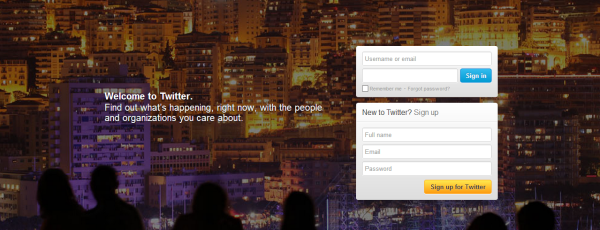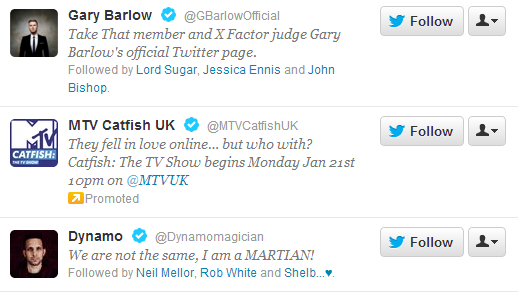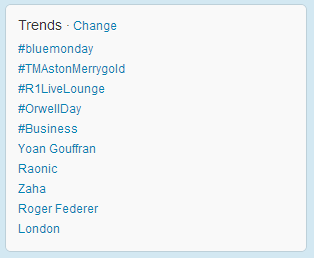A Beginners Guide To Twitter – Six Frequently Asked Questions
Twitter now boasts over 500 million users worldwide. 350million of those users use the site every single day.
Many news stories now break first on Twitter - and many news stories are created by Twitter (think Ryan Giggs, Sally Bercow etc).
But if, like many, the talk of retweets and hashtags leaves you feeling confused and left out this begineers guide will lift the fog for you - because as a marketer, you just cannot afford to ignore this worldwide phenomenom. 
So here are the six most frequently asked questions about Twitter:
1) What is Twitter?
Twitter is a 'micro-blogging' platform. Although it has many uses, its main function is that it allows you to publish messages up 140 characters long that can contain links and images and can be read by anyone, anywhere.
It is used in different ways by many different people. It can be used by a family to keep in touch, a company to attract customers, the media to keep people informed or a writer to build up a fan base.
Setting up a profile is quick, easy and costs nothing - in fact some people and organisations have multiple accounts. When creating an account you can upload an image, a short decription and choose a username (for example, mine is @leanneatjdr)
2) What does it mean to follow somebody?
Following someone on Twitter means:
- You are subscribing to their Tweets as a follower
- Their updates will appear in your 'Home' screen
- That person is able send you direct messages

3) What’s the benefit of having followers?
As a marketer, the more followers on Twitter your business has, the more potential customers you can promote and market your goods or services to to grow your sales.
Twitter allows your followers to ‘re-tweet’ your posts to their followers. If you have 100 followers and 5 of them 're-tweet' one of your messages to their followers - let's say they have 100 followers each - then suddenly that message has reached 500 people. If some of those people also re-tweet the message you can see how some messages can go 'viral'.
So every time you post something intersting, entertaining and useful you give yourself the opportunity to be discovered by new people who didn't previously know about you.
And not just customers, suppliers could also find you - or even potential business partners - hence the name social 'networking'.
Twitter marketing also has some search engine optimisation benefits - Bing is already including social signals from Twitter in it's search results and Google is sure to follow.
4) What are hash-tags (and what’s trending)?
People use the hash-tag symbol '#' before a relevant keyword or phrase (no spaces) in their Tweet to categorise those Tweets and help them show more easily in Twitter Search. For example, during live TV episodes of 'X Factor', many Twitter users tag tweets about the show with the hashtag #xfactor. Here are some basics about hashtags:
- Clicking on a hash-tagged word in any message (like #xfactor) shows you all other Tweets marked with that keyword. This means people all over the world can share a conversation about a particular topic.
- Hash-tags can occur anywhere in the Tweet – at the beginning, middle, or end.
- Hash-tagged words that become very popular can become 'trending' topics (a trending topic is a word, phrase or topic that is posted multiple times on Twitter).
Example: In the Tweet below, '@eddie' (the username for Ed Gutman) included the hash-tag #FF. Users created this as shorthand for "Follow Friday," a weekly tradition where users recommend people that others should follow on Twitter. You'll see this on Fridays.


5) How does Twitter benefit my business?
Twitter enables you to:- Find and grow your target audience – as of April 2012 Twitter had over 500 million users worldwide. These include businesses and consumers, companies and individuals. Whatever your target market, they will be present and easy to find and connect with in Twitter. For example, if you are a lighting wholesaler it is easy to find and connect with UK lighting shops that may buy from you on Twitter using the search feature
- Engage with that audience in a fast and efficient way – Twitter allows you to constantly interact with you customers and provides a great way of building relationships with people
- Build your credibility with the power of social proof - for example, if people see that 10,000 people follow you on Twitter, that means 10,000 people are interested in what you have to say (and therefore I'm more likely to be interested in what you have to say)
A great example of Twitter marketing is Zappos. The online shoe retailer could be the most ‘Twitterfied’ company in the world, with over 1/3rd of the company’s employees involved. The company’s founder, Tony Hsieh, has racked up over 600,000 followers. He is considered to be the most active CEO on Twitter. Why is this important? Zappos interact with much of their customer base on a one on one basis. They also boast that 75% of their purchases are made by repeat customers. Coincidence? We think not.
6) What are 're-tweets'?
A re-tweet is a re-posting of someone else's Tweet. Twitter's re tweet feature helps you and others quickly share that Tweet with all of your followers.
Sometimes people type RT at the beginning of a Tweet to indicate that they are re-posting someone else's content. This isn't an official Twitter command or feature, but signifies that they are quoting another user's Tweet. You can also use this abbreviation to ask people to re-tweet' your messages (for example, '30% off all items for one day only. Please RT')


